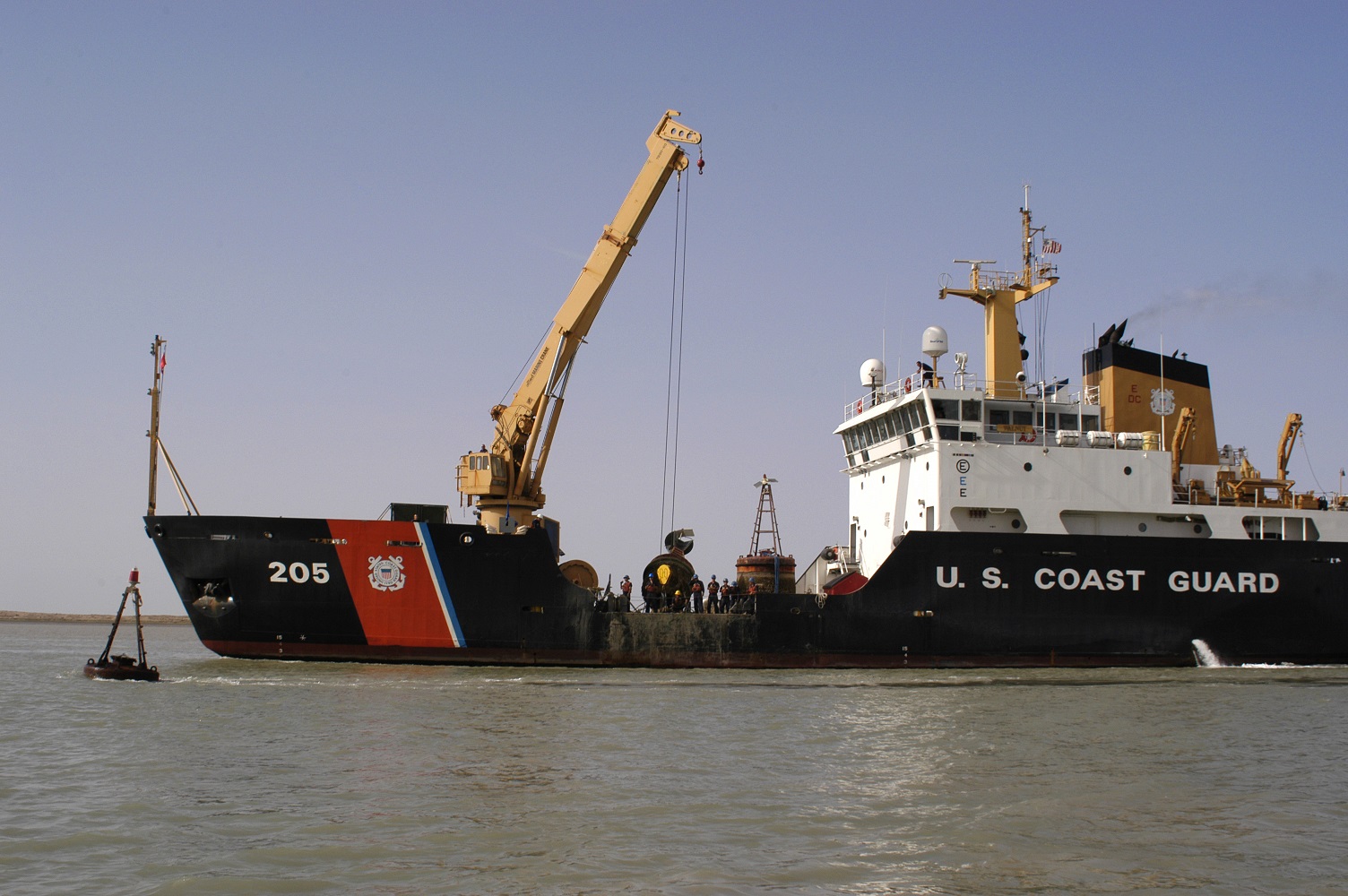 Coast Guard members and units, and its predecessor services, have served with distinction in every major American conflict. Operation Iraqi Freedom (OIF), which began in 2003, proved no exception to this rule. In OIF, the Coast Guard excelled in its specialties of port security, coastal and environmental security, and maritime interdiction operations. At the height of combat operations, 1,250 Coast Guard personnel served in OIF. Coast Guard vessels and land-based personnel brought many vital c
Coast Guard members and units, and its predecessor services, have served with distinction in every major American conflict. Operation Iraqi Freedom (OIF), which began in 2003, proved no exception to this rule. In OIF, the Coast Guard excelled in its specialties of port security, coastal and environmental security, and maritime interdiction operations. At the height of combat operations, 1,250 Coast Guard personnel served in OIF. Coast Guard vessels and land-based personnel brought many vital c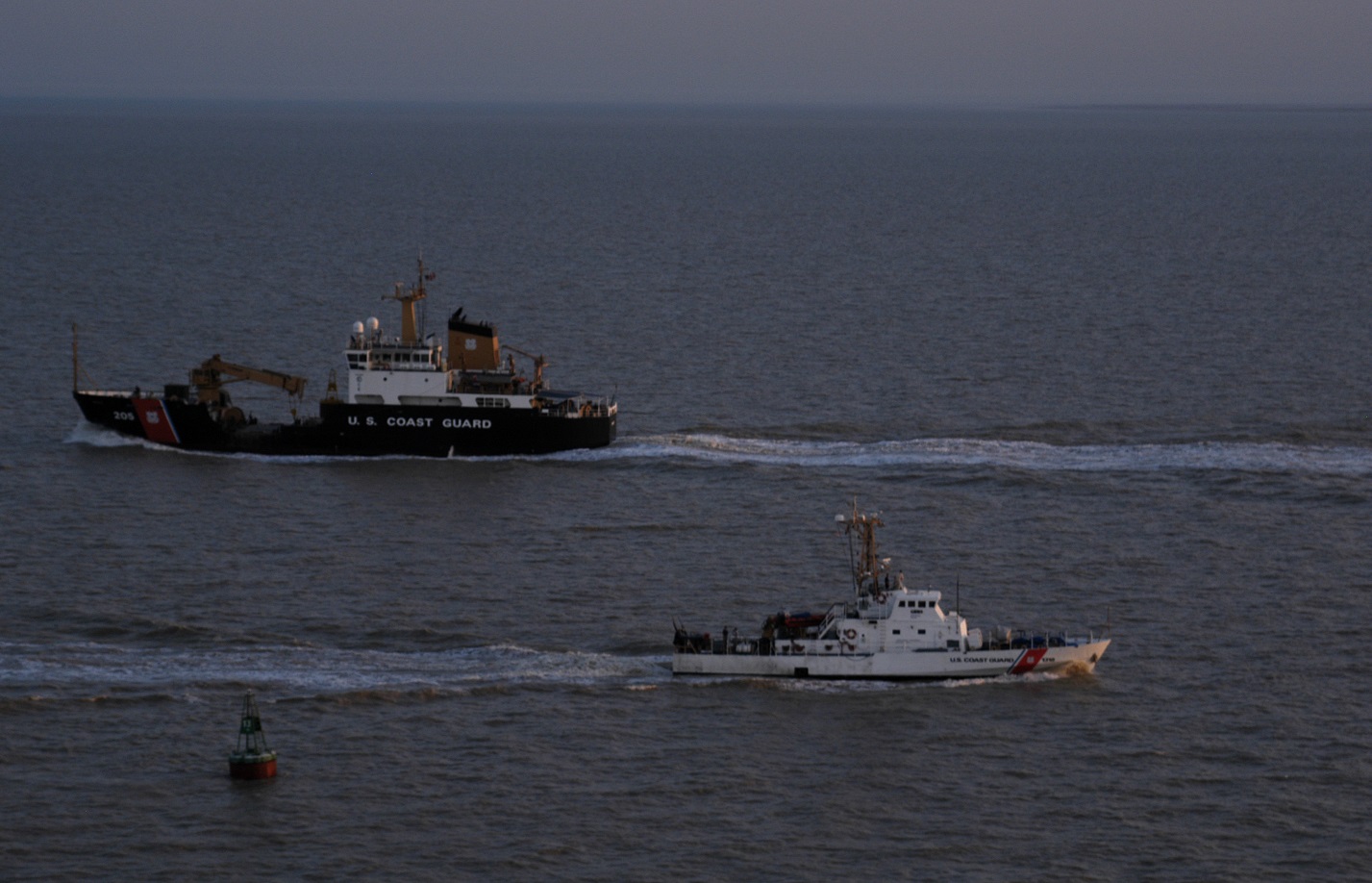 abilities to the theater of operations, including aids-to-navigation (ATON).
abilities to the theater of operations, including aids-to-navigation (ATON).
Leading up to the March 2003 offensive that initiated OIF, planners believed that the Iraqi regime might engage in acts of environmental warfare as it had at the end of the First Gulf War (1990-1991). The Coast Guard’s Pacific Area (PACAREA) command received a request from U.S. Naval Forces Central Command (NAVCENT) for an ocean-going buoy tender for environmental disaster response. PACAREA selected the 225-foot buoy tender Coast Guard Cutter Walnut, home-ported in Honolulu. Like other buoy tenders in its class, Walnut carried a spilled-oil recovery system that could skim over 400 gallons of oil per minute and pump the oil into specially designed 20,000-gallon inflatable barges.
NAVCENT’s request for the Walnut went up to the Department of Defense’s Central Command (CENTCOM) and on to the Joint Chiefs of Staff. The request specified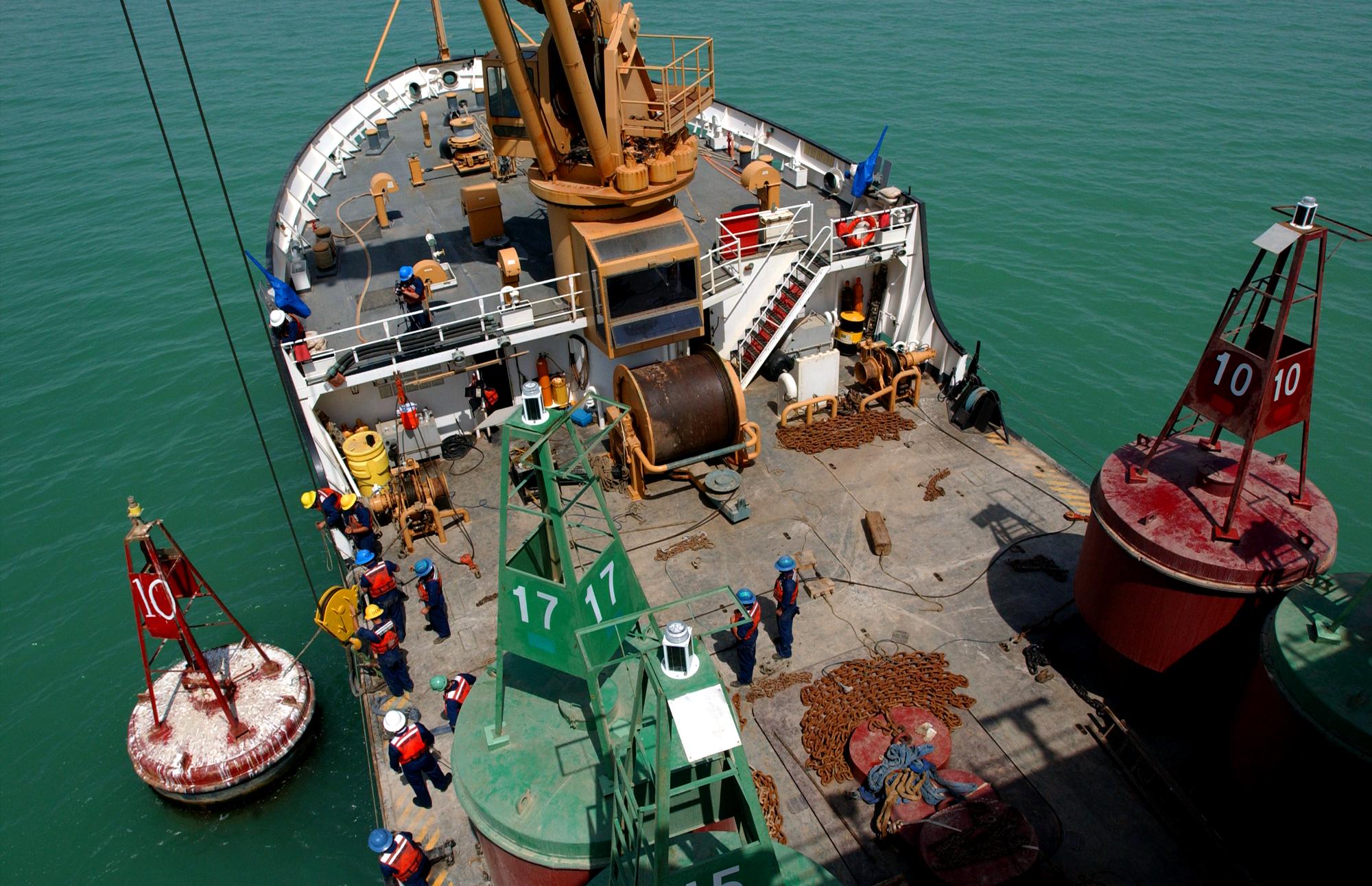 an arrival date no later than Feb. 28. Before departure, the buoy tender had to prepare for combat operations. It received extra small arms and two additional .50 caliber machine guns for a total of four .50 calibers along its deck rail. This provided added firepower to defend against potential small-craft attacks while serving in the theater of operations. Walnut also added four additional crewmembers, including one to aid with chemical, biological and radiological (CBR) defenses and three others to support 24-hour radio coverage. Walnut’s crew also received pre-deployment small arms training and CBR drills.
an arrival date no later than Feb. 28. Before departure, the buoy tender had to prepare for combat operations. It received extra small arms and two additional .50 caliber machine guns for a total of four .50 calibers along its deck rail. This provided added firepower to defend against potential small-craft attacks while serving in the theater of operations. Walnut also added four additional crewmembers, including one to aid with chemical, biological and radiological (CBR) defenses and three others to support 24-hour radio coverage. Walnut’s crew also received pre-deployment small arms training and CBR drills.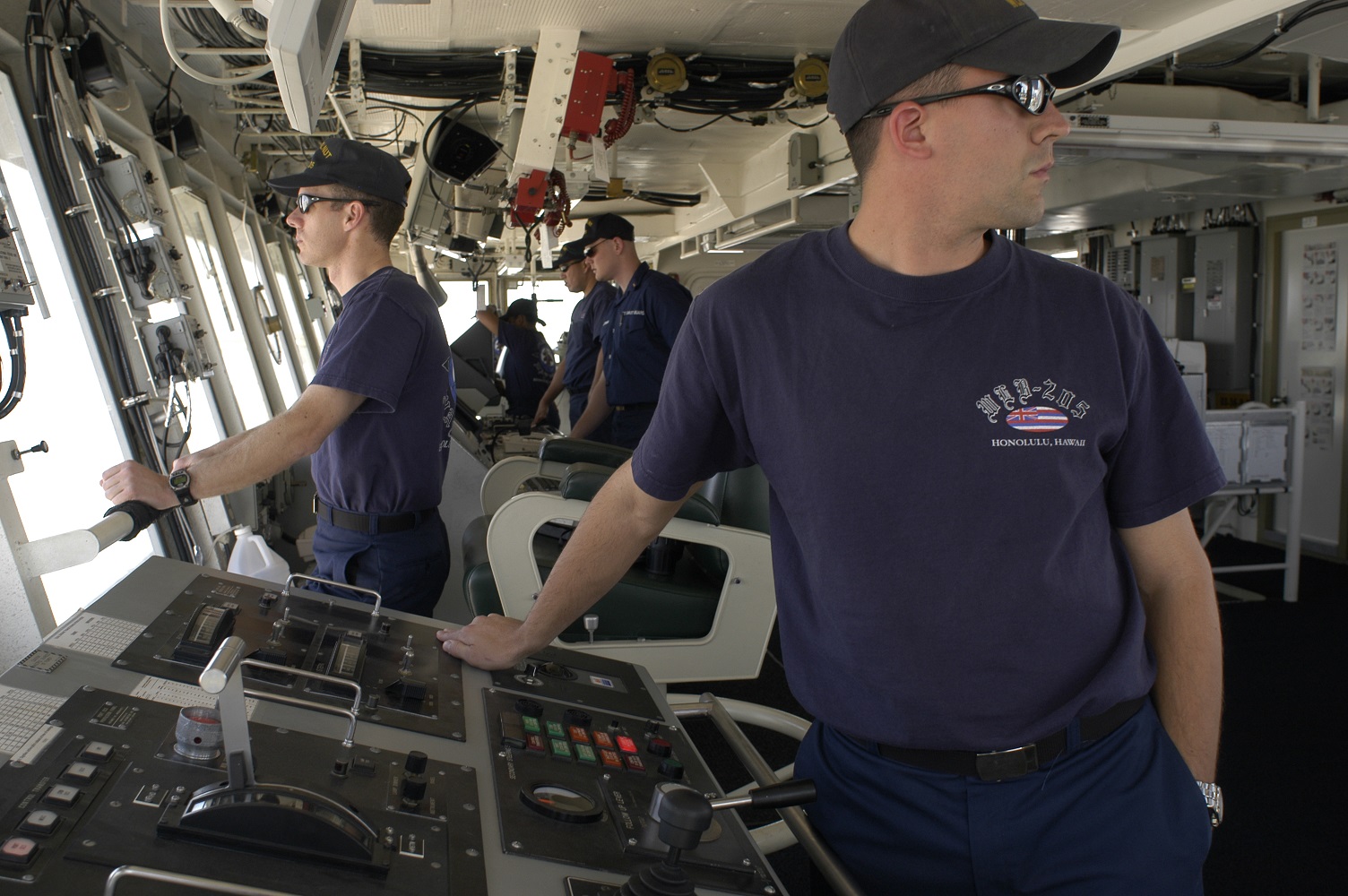
One month prior to the arrival deadline, Defense Secretary Donald Rumsfeld had not signed the cutter’s deployment order. And, with Walnut’s transit speed of around 12 knots, PACAREA planners realized the buoy tender had to get underway at least a month before that date regardless of formal authorization. Lacking official sanction, Walnut got underway and began passage to the Persian Gulf Jan. 18, 2003. For the first leg, Walnut steamed from Honolulu to Guam, a base on the outside limit of the buoy tender’s normal area of responsibility. In Guam, Walnut loaded extra equipment for oil-spill capability and awaited the official deployment order. Rumsfeld signed the order after Walnut had laid over for a few days, so it departed Guam and continued on its way.
Walnut’s crew had new concerns after departing Guam. Piracy remained a threat to commercial shipping in the Philippine archipelago, especially f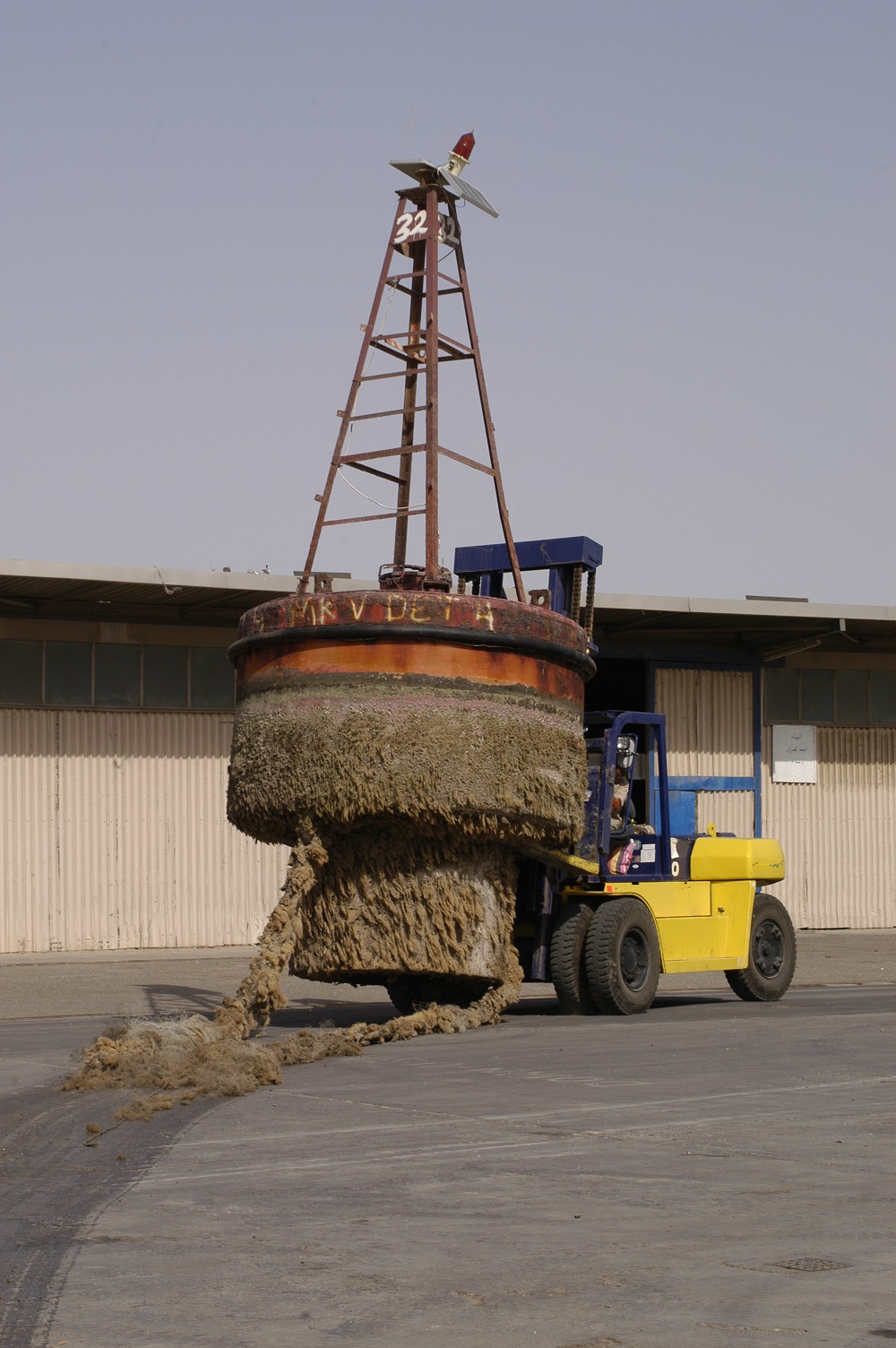 or small slow coastal freighters with a low freeboard and Walnut resembled these vessels. To counter the threat of piratical attack, Walnut’s captain placed extra lookouts on the bridge and fantail, providing everyone with night vision goggles during the evening, and the crew prepared fire hoses and small arms for rapid response. Walnut transited
or small slow coastal freighters with a low freeboard and Walnut resembled these vessels. To counter the threat of piratical attack, Walnut’s captain placed extra lookouts on the bridge and fantail, providing everyone with night vision goggles during the evening, and the crew prepared fire hoses and small arms for rapid response. Walnut transited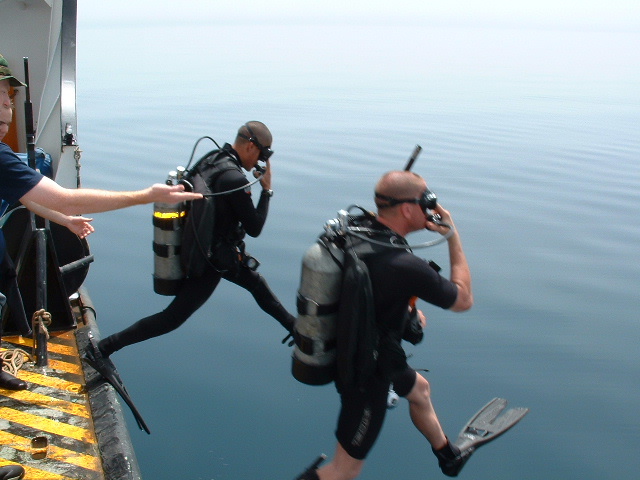 the area without incident and steamed on to Singapore and, from there proceeded to the Persian Gulf to rendezvous with the OIF’s Coalition fleet.
the area without incident and steamed on to Singapore and, from there proceeded to the Persian Gulf to rendezvous with the OIF’s Coalition fleet.
On Feb. 27, a day before Walnut’s arrival deadline, the buoy tender moored at Mohammad Al-Ahmad Kuwait Naval Base. By that time, it had already changed operational command to the U.S. Navy’s Task Force 55. It was the first out-of-hemisphere combat deployment of a Coast Guard buoy tender since the Vietnam War. For the next two weeks, Walnut’s law enforcement team checked U.N. resolution compliance of commercial vessels bound to and from Iraq. They did so by boarding in-bound commercial vessels to search for contraband cargo and checking out-bound vessels for illegal Iraqi oil. After helping alleviate the backlog of vessels requiring compliance boardings, Walnut took up station as the “guard ship” overseeing the holding area for commercial vessels steaming in and out of Iraq. In late March, Walnut also supported Coast Guard Port Security Units that occupied the newly captured Gulf Oil Platforms (GOPLATs) by shipping supplies to the GOPLATs and unloading them with its 40,000-pound capacity buoy crane.
Walnut was deployed to the Persian to defend against environmental warfare in the form of oil spills. However, the buoy tender’s primary capability was aids-to-navigation. The decrepit 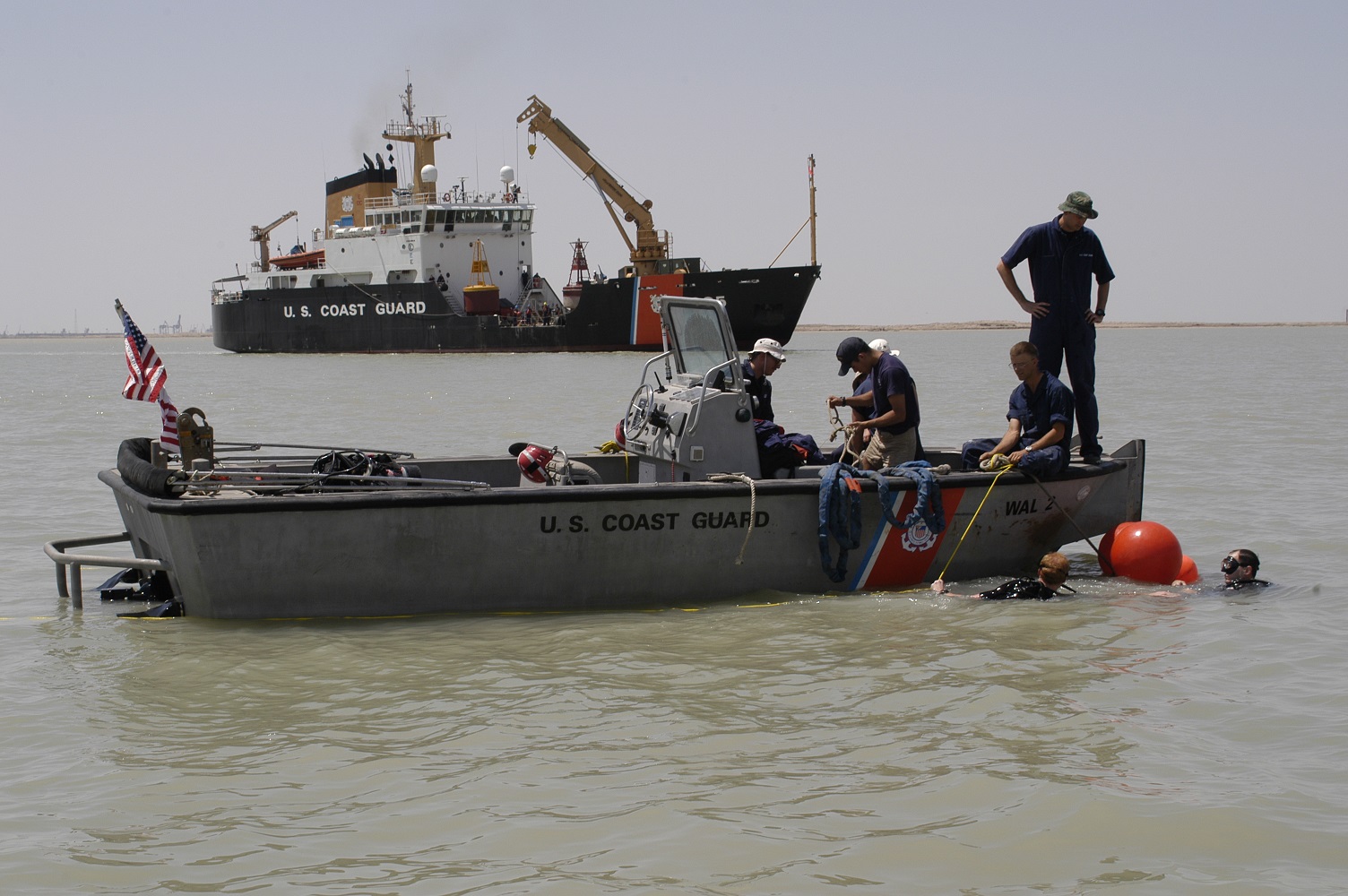 buoy system marking the channel along the Khor Abd Allah (KAA) Waterway leading to Iraq’s primary port of Umm Qasr proved very
buoy system marking the channel along the Khor Abd Allah (KAA) Waterway leading to Iraq’s primary port of Umm Qasr proved very 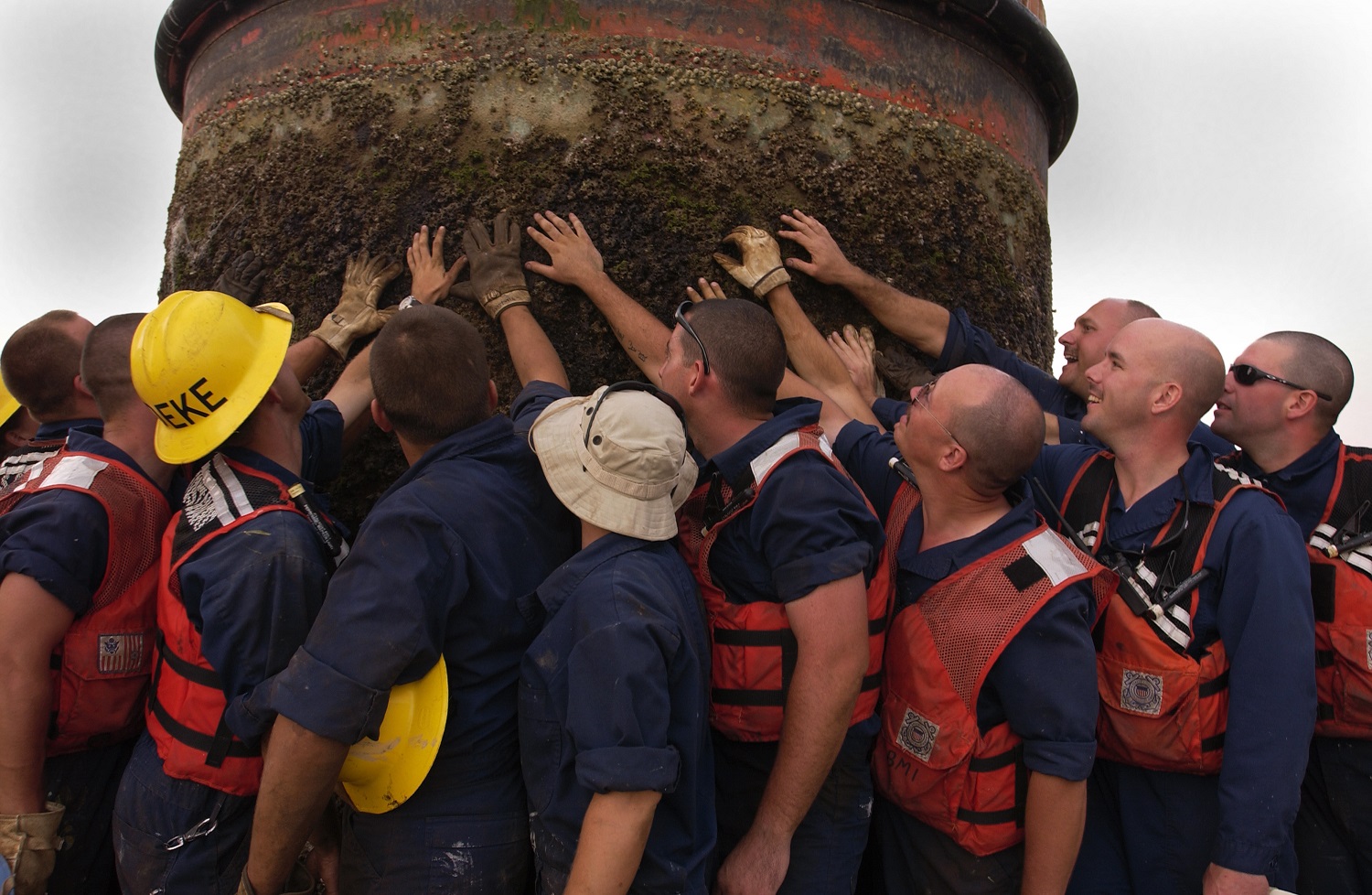 dangerous for deep draft commercial vessels. So, early in April, Walnut’s crew began surveying the waterway’s old Iraqi buoys beginning with an aerial assessment from Coast Guard Cutter Boutwell’s HH-65 helicopter. And, on April 1, personnel from Walnut boarded the 110-foot Cutter Baranof to survey the KAA’s buoy system from the water. The survey team found the buoys in poor condition, and none were located on station.
dangerous for deep draft commercial vessels. So, early in April, Walnut’s crew began surveying the waterway’s old Iraqi buoys beginning with an aerial assessment from Coast Guard Cutter Boutwell’s HH-65 helicopter. And, on April 1, personnel from Walnut boarded the 110-foot Cutter Baranof to survey the KAA’s buoy system from the water. The survey team found the buoys in poor condition, and none were located on station.
Walnut’s crew heard rumors that a warehouse in the old port of Umm Qasr housed a full set of new buoys. During the Baranof trip, the survey party stopped at Umm Qasr and located the warehouse. A few days later, Walnut also transited the KAA to survey the waterway’s channel marker system and the cutter moored in Umm Qasr. By April 9, Walnut received orders from CENTCOM to rebuild the channel marking system. The buoy tender on-loaded supplies in Bahrain for repairing and replacing the old buoys and got underway to begin ATON operations along the KAA Waterway.
Aids-to-navigation work along the waterway proved more dangerous than in Walnut’s home waters of Hawai’i and the Pacific. The current flowing down the KAA could reach a rate of nearly five miles per hour. In addition,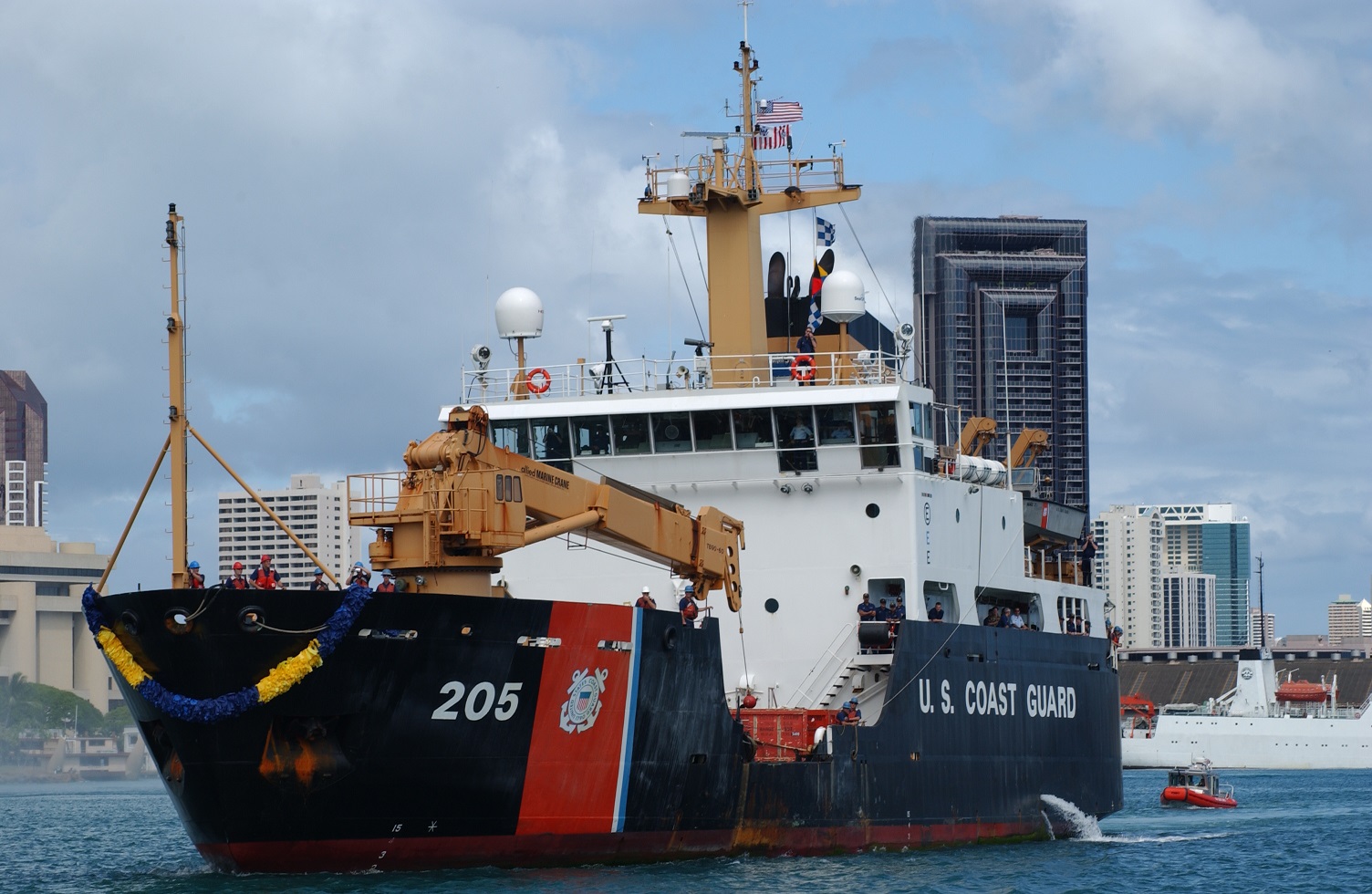 there existed the threat of boob
there existed the threat of boob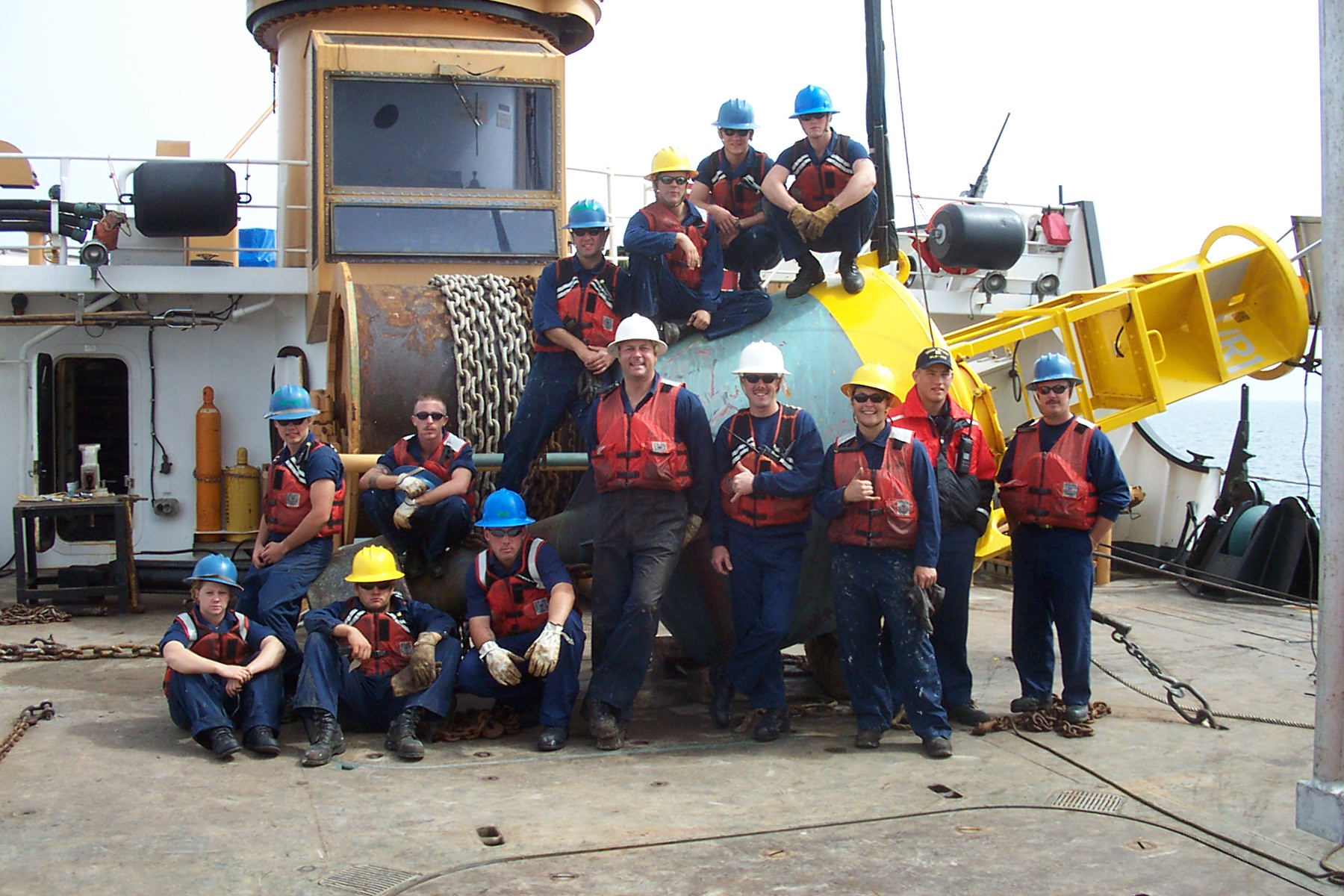 y-trapped buoys or floating mines caught in buoy anchor chains. With the Arabian summer approaching, physical work proved extremely hot and, when raised on deck, the Iraqi buoys brought with them the stench of accumulated marine growth and clouds of flies attracted by the smell. And, the war-zone threat level remained high, so Walnut’s crew remained vigilant with their weapons locked and loaded.
y-trapped buoys or floating mines caught in buoy anchor chains. With the Arabian summer approaching, physical work proved extremely hot and, when raised on deck, the Iraqi buoys brought with them the stench of accumulated marine growth and clouds of flies attracted by the smell. And, the war-zone threat level remained high, so Walnut’s crew remained vigilant with their weapons locked and loaded.
Walnut’s deck crew raised each of the old buoys and replaced them with new ones equipped with solar-powered LED lights. Within a month, the buoy tender replaced all the old channel markers with new freshly painted buoys that properly marked the channel day or night. On May 5, Walnut placed the final buoy and began preparations to return home. In mid-May, Walnut departed the Persian Gulf for the 45-day voyage back to Hawai’i. Walnut never did use its oil spill capability, but the cutter proved vital to ATON work on the KAA, ensuring the safe transit of Coalition vessels and humanitarian aid to the port of Umm Qasr.
During OIF, the Coast Guard performed many vital functions, including aids-to-navigation. Buoy tender Walnut and crew added an important chapter to the history of the long blue line and lived up to the Coast Guard’s motto Semper Paratus, “always ready.”
In the News: